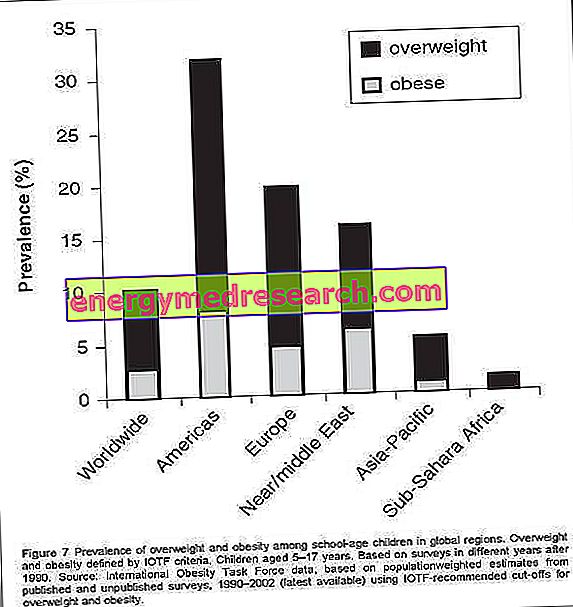By Dr. Davide Sganzerla
According to the latest evaluations of the International Obesity Task Force (May 2004), one in ten children worldwide is overweight. There are about 155 million school-age children who are overweight and within these, around 30-45 million are obese.
Figure 7 shows the percentages of overweight and obese school-age children in various regions of the world in the late 1990s.

In Europe, the average percentage of children aged 5 to 17 in excess of weight is around 20%. The highest levels of overweight and obesity are observed in southern European countries.
Recent studies have found, based on the IOTF criterion, that 36% of 9-year-old Italian children are overweight or obese (Perra, 2002); in Greece, the percentage of excess weight is 26% in boys and 19% in girls aged 6 to 17 (Krassas, 2001); in Spain, 27% of children and adolescents are overweight or obese. (Majem, 2001).

As shown in Figure 8, northern European countries (10-20%) tend to have lower incidence rates than in southern countries (20-35%); for example, in 1998 about 20% of children in the United Kingdom were overweight or obese (Lobstein, 2003); in Sweden the percentage is 18% among 10-year-old children, while it is 13% among Finnish teenagers. (Kautiainen, 2002).
The reasons for these differences are not clear. Genetic factors are unlikely, because this trend can also be shown within a single country, such as Italy (see Figure 2). The child's family or family income can be two possible causes, but even the economic recession can increase the percentage of obesity. In fact, Croatia suffered an economic recession in the nineties and had an increase in the percentage of excess weight in school-age children (Hrvatski, 1998), while the Czech Republic, economically damaged by the crisis in Russia, had increased from 10 % to 12.5% in the period between 1991 and 1999. (Bláha, 2002).
However, despite the increasing trend throughout Europe and the economic recession that had occurred with the fall of communism, in Russia the percentage of childhood obesity decreased from 15.6% to 9% between 1992 and 1998 (Wang, 2002).



